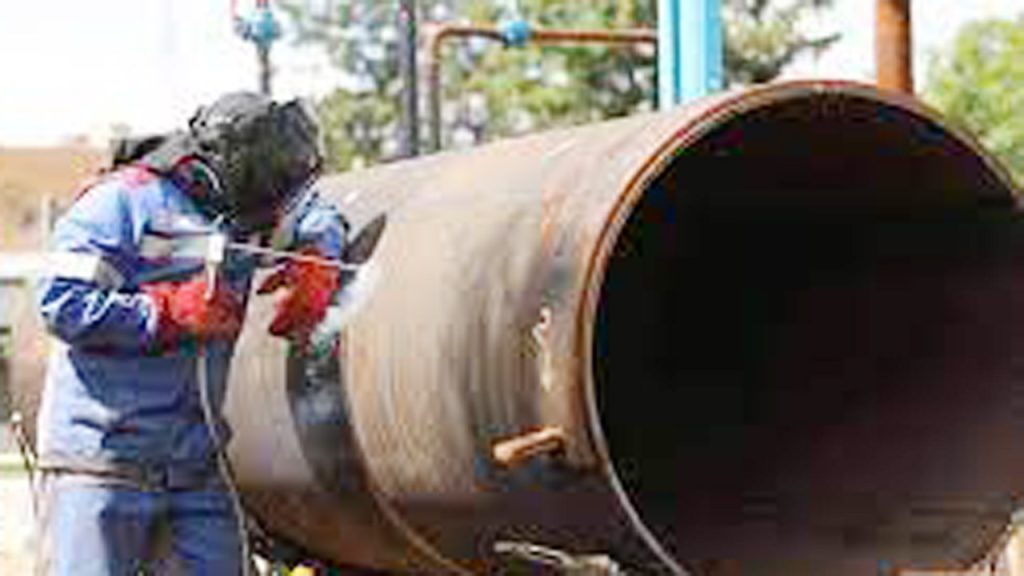Welding is an incredible skill that brings metal together to create everything from towering skyscrapers to essential pipelines. If you’ve been exploring the world of welding or considering a project, you’ve likely come across terms like “pipe welding” and “stick welding.” But what’s the difference between the two?
As someone who has spent time working with both methods, I can tell you that each has its unique place in the welding world. While they may sound similar to a beginner, understanding their differences is crucial to choosing the right approach for your project.

Image by resources.arcmachines
Let me guide you through the key distinctions between pipe welding and stick welding, including their techniques, applications, and benefits.
What is Pipe Welding?
Pipe welding is a specialized form of welding used to join cylindrical structures like pipes. This process is often employed in industries such as oil and gas, plumbing, and chemical plants, where durable and precise pipe connections are critical.
In pipe welding, the focus is on creating strong welds that can withstand high pressure and environmental challenges. Due to the circular shape of pipes, welders must work in challenging positions, often requiring advanced skills and precision.
Characteristics of Pipe Welding
- Specialized Welding Technique: Specifically used for joining pipes of various diameters and thicknesses.
- Demanding Work Environment: Requires welding in awkward positions, including overhead and vertical.
- Variety of Methods Used: Techniques like TIG, MIG, and stick welding can be applied, depending on the pipe material and application.
- High Skill Requirement: Mastery is essential, especially in industries where safety and durability are non-negotiable.
What is Stick Welding?
Stick welding, or Shielded Metal Arc Welding (SMAW), is one of the oldest and most versatile welding techniques. It uses an electrode coated in flux to create a weld, with the flux providing a protective shield against contaminants.
This method is popular for its simplicity and portability, making it a go-to choice for various applications, including repairs and outdoor welding.
Characteristics of Stick Welding
- Versatile Welding Process: Can be used on different metals like steel, stainless steel, and cast iron.
- Portable Equipment: Ideal for on-site welding projects.
- Beginner-Friendly: Easier to learn compared to more complex methods.
- Cost-Effective: Requires fewer tools and accessories, making it accessible for smaller projects.
Key Differences Between Pipe Welding and Stick Welding
Now that you have a basic understanding of each method, let’s explore how they differ.
Purpose and Application
Pipe Welding
Pipe welding is highly specialized and often used in industrial settings. Its primary focus is on joining pipes to create leak-proof and durable systems. This method is essential for critical infrastructures like pipelines, chemical plants, and energy facilities.
Stick Welding
Stick welding is more general-purpose. It’s suitable for tasks like repairing farm equipment, fabricating structures, and welding in outdoor environments. While it can be used for pipes, it’s not exclusively designed for that purpose.
Skill Level Required
Pipe Welding
Pipe welding demands a higher level of skill and training. Welders must be able to work in challenging positions, such as overhead or around the circumference of a pipe, with consistent precision. Certifications are often required for industrial pipe welding jobs.
Stick Welding
Stick welding is relatively easier to learn and a common starting point for beginners. It doesn’t require the same degree of precision as pipe welding, making it more forgiving for new welders.
Equipment Used
Pipe Welding
The equipment for pipe welding varies depending on the technique used. TIG or MIG welders are often employed for high-quality welds, while stick welding machines can also be used for simpler pipe projects. Additional tools, like pipe clamps and rotators, are often needed.
Stick Welding
Stick welding requires minimal equipment—a welding machine, electrode holder, and electrodes. This simplicity makes it portable and cost-effective.
Techniques Involved
Pipe Welding
Pipe welding may involve multiple techniques, such as TIG welding for precise welds or MIG welding for faster results. The process often requires multiple passes to ensure a strong weld, especially in thicker pipes.
Stick Welding
Stick welding relies on a single electrode coated in flux. While it’s a straightforward process, the quality of the weld can vary depending on the skill of the welder and the electrode used.
Challenges
Pipe Welding
Pipe welding is physically demanding and requires mastery of positional welding. Welders must often deal with limited access, high heat, and the need for exact alignment to prevent leaks.
Stick Welding
Stick welding can be challenging for outdoor projects in windy conditions, as the shielding gas from the flux can be disrupted. The process also generates significant slag, which needs to be cleaned after welding.
Pros and Cons of Pipe Welding
Pros
- Essential for high-pressure and high-temperature applications.
- Produces durable and leak-proof joints.
- Allows for customization based on pipe material and requirements.
Cons
- Requires advanced skills and certifications.
- Equipment and techniques can be costly.
- Time-consuming compared to simpler welding methods.
Pros and Cons of Stick Welding
Pros
- Portable and cost-effective.
- Works on a wide range of metals.
- Suitable for outdoor and on-site welding.
Cons
- Less precise than pipe welding.
- Not ideal for thin materials or intricate projects.
- Requires more cleanup due to slag.
When to Use Pipe Welding vs. Stick Welding
Choosing between pipe welding and stick welding depends on your project’s requirements:
- Use Pipe Welding if you’re working on pipelines, industrial systems, or projects requiring strong, leak-proof joints.
- Use Stick Welding for general repairs, outdoor tasks, or when portability is essential.
My Personal Experience
When I first tried pipe welding, it was intimidating. The precision and skill required felt overwhelming, especially when working on overhead joints. But with practice and patience, I realized how rewarding it is to see a perfectly welded pipe ready to handle pressure and stress.
On the other hand, stick welding was my go-to method for quick fixes. I loved its simplicity and the fact that I could carry the equipment to remote locations. While it didn’t always produce the prettiest welds, it got the job done efficiently.
Conclusion
Both pipe welding and stick welding are essential techniques in the welding world, but they serve different purposes. Pipe welding is your best bet for specialized, industrial applications that demand precision and durability. Stick welding, on the other hand, is versatile, beginner-friendly, and perfect for general repairs and outdoor projects.
Understanding these differences will help you make an informed decision based on your project’s needs. Whether you’re a seasoned welder or just starting, each method has its place in creating strong and reliable connections.
So, take your time to learn, practice, and enjoy the art of welding. No matter which method you choose, the satisfaction of creating something strong and enduring is unmatched.
FAQs
Can stick welding be used for pipe welding?
Yes, stick welding can be used for pipes, but it may not provide the same level of precision and durability as other techniques like TIG welding.
Which is harder: pipe welding or stick welding?
Pipe welding is generally harder because it requires advanced skills, certifications, and the ability to weld in challenging positions.
What type of welder is best for pipe welding?
TIG and MIG welders are commonly used for pipe welding due to their precision and ability to handle different materials.
Is stick welding suitable for beginners?
Yes, stick welding is beginner-friendly and a great way to learn the basics of welding.
What industries use pipe welding the most?
Pipe welding is widely used in industries like oil and gas, plumbing, chemical plants, and energy facilities.

Endow Russel the owner chief editor of giftendow.com . I am a mechanical engineer and assign to an local firm with much experience in welding and industrial equipment.

